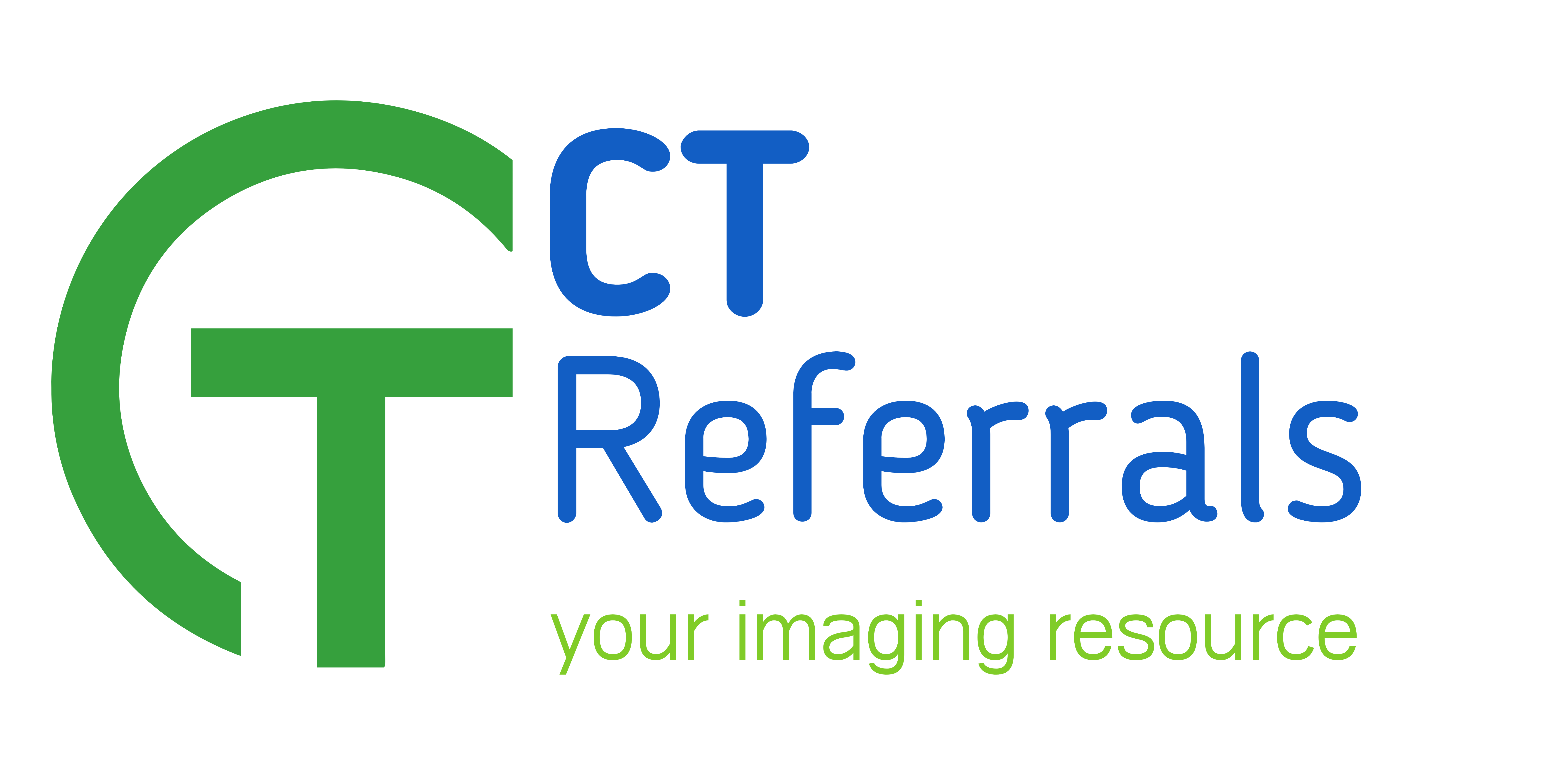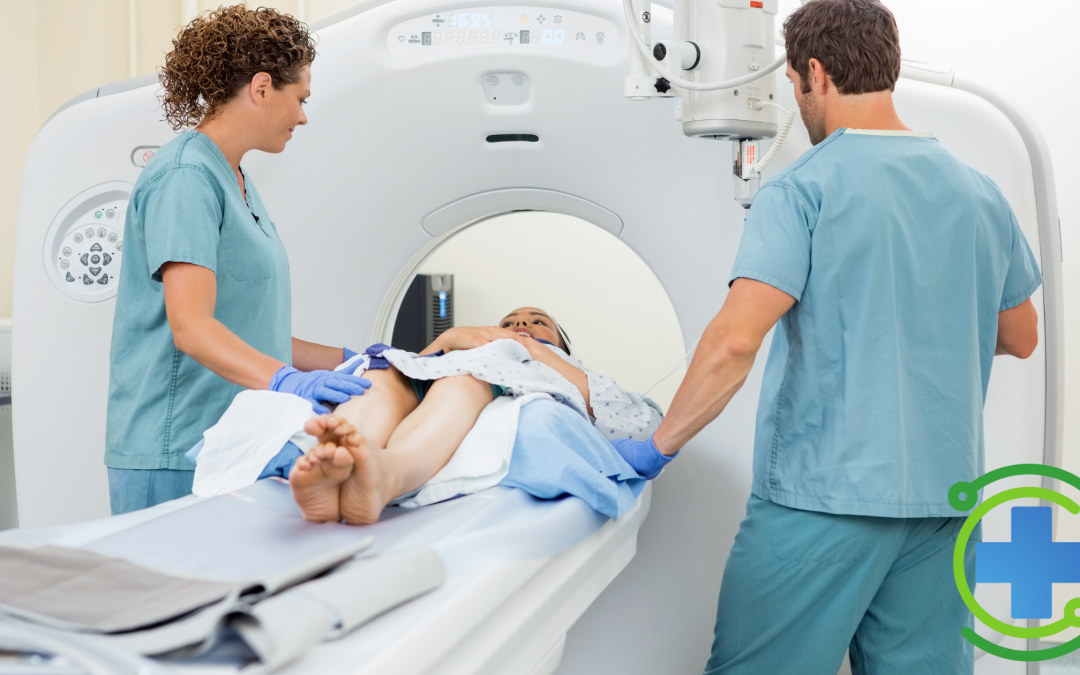CT scans, or computed tomography scans, are a type of medical imaging that use x-rays to create a cross section image of the subject’s body. These cross section x-ray images will visualize bone, blood vessels and soft tissue. The images known as slices create pictures of the inside of your body. They are often used to diagnose medical conditions and help plan treatments. If you’re scheduled for a CT scan, here’s what you need to know!
What is a CT Scan and How Does it Work
A CT scan, also known as a CAT scan, is a medical imaging procedure that uses special X-ray equipment to produce cross-section slice images of the subject’s body. These images allow doctors to see internal structures, such as bones, organs, and blood vessels, in much greater detail than traditional X-rays. During a CT scan, the patient lies on a table that moves through a tube-shaped machine while X-rays are beamed at the subject from different angles. The computer then combines the X-ray images to create a 3D view of the body. CT scans are useful for detecting problems in the brain, chest, abdomen, and pelvis. While they do involve exposure to a small amount of radiation, the benefits of obtaining detailed images outweigh the risks.
Benefits of a CT Scan
A CT scan is a non-invasive procedure that can help doctors diagnose a wide range of medical conditions, including tumors, infections, and injuries. One of the biggest benefits of a CT scan is its ability to provide accurate, high-resolution images quickly, making it an essential tool in emergency settings. CT scans are used extensively in cancer treatment planning, as they allow doctors to assess the size and location of tumors and other abnormal growths. Additionally, CT scans have a very low risk of causing harm to patients, making them a safe and effective diagnostic tool for many medical applications
Different Types of Scans Available
In medical imaging, there are several types of scans available to patients. X-rays permit doctors to see inside the body and check for broken bones or problems with the lungs or heart. Ultrasound scans are common during pregnancy and can detect problems with the developing fetus. CT scans use multiple X-rays to create detailed images of the body’s internal organs and tissues. MRI scans use powerful magnets and radio waves to produce images of the body’s soft tissues, such as the brain or joints. PET scans detect subtle chemical changes within the body that can indicate cancer or other diseases. By understanding the different scans available, patients can work with their healthcare team to determine the best course of action for diagnosing and treating any issues they may be experiencing.
Preparing for a CT Scan
A CT scan, or computed tomography, is a medical procedure that uses X-rays to create detailed images of the inside of your body. It is a valuable tool for diagnosing medical conditions and planning treatments. Prior to your CT scan, your healthcare provider may give you instructions on what to eat and drink, as well as any medications you need to take. You may also be required to remove any jewelry or clothing that could interfere with the scan. During the scan, you will lie on a table that slides into the CT machine. The machine will rotate around you, taking images from different angles. You may be asked to hold your breath for short periods during the scan to ensure clear images. It is important to remain still during the scan to avoid blurry images. Once the procedure is complete, you can resume your normal activities. Overall, a CT scan is a safe and noninvasive way to get an accurate picture of the inside of your body.
What to Expect During the Procedure
It’s common to be unsure of what to expect, when faced with a medical procedure. Depending on the type of procedure, there may be different steps to follow and preparations to make beforehand. It’s important to communicate with the medical professionals involved. The professionals will explain any potential risks or side effects. During the procedure, you can expect to be monitored closely to ensure your safety and well-being. Afterward, there may be a recovery period during which you should rest and follow the instructions given by your healthcare provider. Undergoing a medical procedure can be intimidating, but knowing what to expect ahead of time can help to ease any fears or concerns.
Questions to Ask Your Doctor About a CT Scan
If you’ve been told that you need a CT scan, you may have a few questions about what to expect. It’s important to speak with your doctor beforehand to ensure you fully understand the process and what it entails. Some questions to ask your doctor include:
What can I expect during the actual CT scan?
How should I prepare for the scan?
What are the risks associated with the scan?
What will the results tell us?
By discussing these concerns with your doctor, you can go into the CT scan with peace of mind and a better understanding of what the procedure entails. Always be proactive about your healthcare and don’t be afraid to ask questions. This is your health and you deserve to be informed.
In conclusion, a CT scan is one of the most common non-invasive imaging tests used to detect organ damage and diagnose illnesses and diseases. CT scans are quick and provide detailed images in order to facilitate the examination of many organs at once. The results from a CT scan can make a huge difference in making an accurate diagnosis and providing successful treatment for a variety of medical conditions. It is important that you prepare yourself properly before undertaking a CT scan. If you have any questions or concerns regarding CT scans, speak to your doctor or provider who will be better able to advise on what type of CT Scan may be best suited and educate any risks associated with the procedure. Ultimately, understanding what’s involved in the entire process helps you stay prepared and informed through each step so that you can achieve the best outcome possible.


Comments